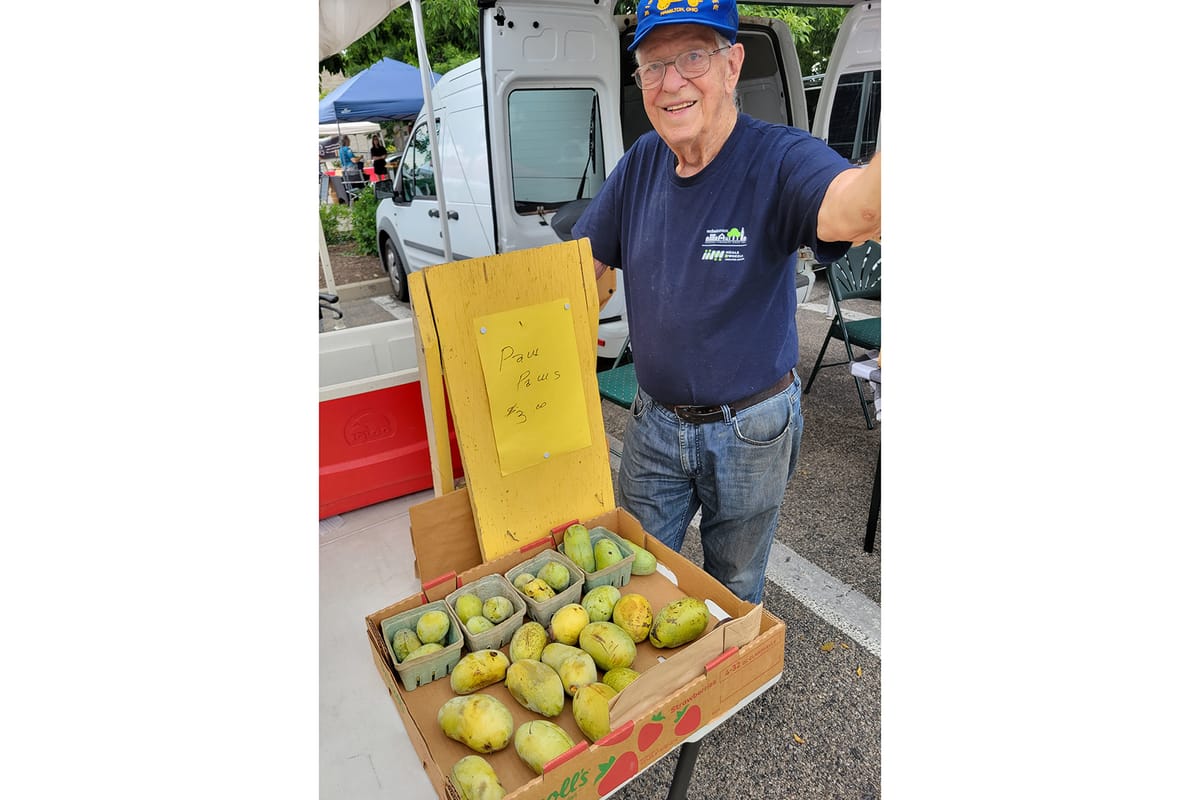Ohio’s largest native fruit is ripe on trees now
Pawpaws aren't as popular as some mass-grown fruits like apples and bananas, but they're just as good. Make sure to eat them quickly so they don't spoil.

Locally harvested pawpaws are available for a limited time at MOON Co-op Market and Oxford’s Farmers Market. Local grower Bob Rauen is responsible for most of the ones in the two local markets.
Pawpaws are by definition a local fruit because they don’t travel well. They ripen too quickly and are too soft for shipment, and they aren’t popular enough for the industrial food system to work their mischief on them, as with apples and other popular fruits.
The Ohio Pawpaw Festival reports that southern Ohio is home to “some of the largest and best tasting wild pawpaw patches on the planet.” Pawpaws around here are usually harvested wild rather than from purposefully planted orchards. Oxford
The pawpaw is said to be the largest edible fruit indigenous to the United States. The name apparently derives from papaya, which in some parts of the world is known instead as paw paw, and they bear a superficial resemblance. The biological name is Asimina triloba, which I believe roughly translates as lobed fruit with seeds divided lengthwise.
My first experience with pawpaws many years ago came from a tree in the front yard of our neighbors Carolyn and Don Auble. Don was incredulous that this big-city boy knew nothing of pawpaws, let alone that they are edible. I’ve since learned that folks around here are obsessed with pawpaws.
Our neighborhood is loaded with pawpaw trees. They do well in part because the foliage is unpalatable to the deer that live in our neighborhood. However, the fruit hangs too high for humans to reach without a high ladder, and squirrels consume most of them before they fall to the ground where we can reach them.
The pawpaw trees in our woods have never borne fruit. To produce fruit, a pawpaw flower must receive pollen from flowers on a nearby tree. Even if pawpaw trees appear in clusters, they may be connected by underground roots, and therefore biologically only a single plant.
Ripe pawpaws have discolored dark spots and need to be eaten promptly. A uniform light green color means they are not yet ripe.
Pawpaws are less versatile than other fruits. When opened, they are too soft to be cut or diced, and the seeds are large. Cut a pawpaw in half and squish with your hands to separate the pulp from the seeds and use the flesh as a puree.
You can substitute pawpaw for mashed banana in recipes. For banana bread, cream with an electric mixer 1/4 cup room temperature butter, 1/2 cup sugar, 1 egg, 1/4 cup creme fraiche and 1/2 teaspoon vanilla. Add to the mixture 3/4 cup flour, 1/2 teaspoon baking soda and 1/4 teaspoon salt.
Stir in 1/2 cup pureed pawpaw and bananas in any combination, plus 1/4 cup chopped walnuts. Mix until just blended. Pour the batter into a greased loaf pan and bake at 350 for an hour.
Pawpaw is Ohio’s official State Native Fruit, so be patriotic. As their season is short, grab some if you see them. Make sure to visit the Dayton Art Institute to view the most notable piece of art related to pawpaw, a painting called Still Life with Pawpaws by Edward Edmonson, Jr.
National Pawpaw Day is Sept. 19, and the Ohio Pawpaw Festival in Athens County is Sept. 13-15. Pawpaws, this is your moment!
James Rubenstein is president of the Board of Directors for the Oxford Free Press and professor emeritus of geography at Miami University.




